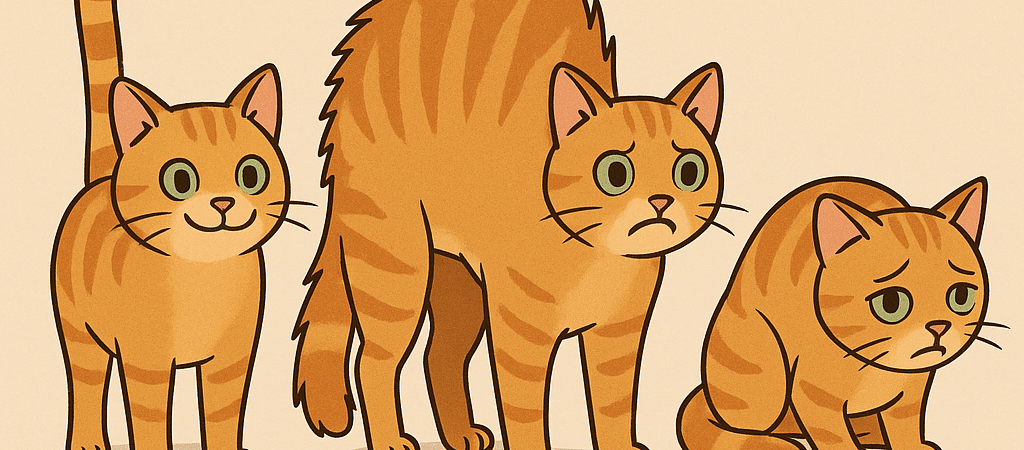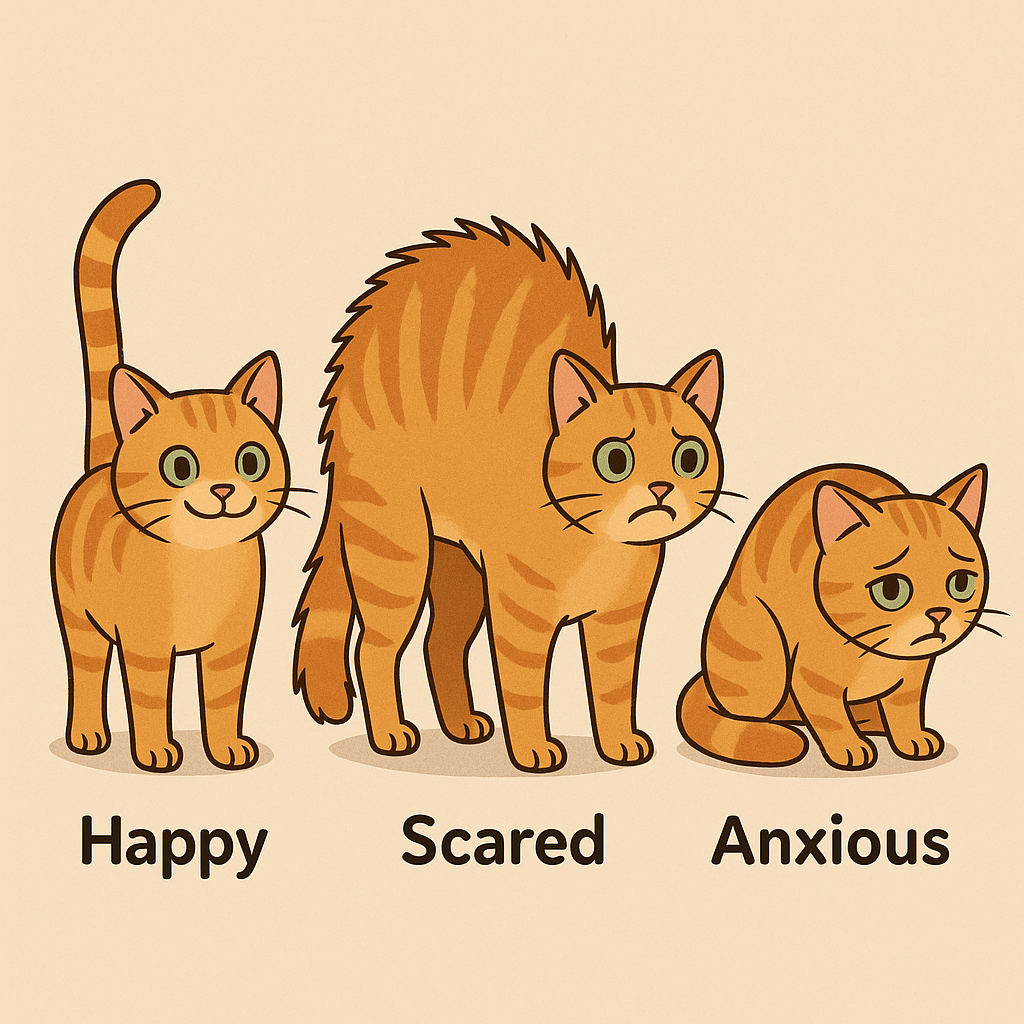
Meta Description: Learn to decode your cat’s body language with this comprehensive guide. Understand tail positions, ear movements, and facial expressions to strengthen your bond with your feline friend.
Have you ever wondered what your cat is trying to tell you when they arch their back, flick their tail, or give you that slow blink? Unlike dogs, who are often more obvious with their emotions, cats communicate through a sophisticated system of subtle body language signals that can be easy to miss if you don’t know what to look for.
Understanding your cat’s body language is like learning a secret code that unlocks a deeper relationship with your feline companion. From the position of their ears to the way they hold their tail, every movement and posture tells a story about how your cat is feeling and what they need from you.
In this comprehensive guide, we’ll decode the most important cat body language signals, helping you become fluent in “cat speak” and strengthen the bond with your beloved pet.
Reading Your Cat’s Tail: The Ultimate Mood Indicator
A cat’s tail is perhaps the most expressive part of their body language repertoire. Think of it as your cat’s emotional barometer – once you learn to read it, you’ll have instant insight into your cat’s mood and intentions.
High and Proud: The Happy Cat Tail
When your cat holds their tail high and straight up like a flagpole, they’re displaying confidence and contentment. This is your cat’s way of saying “I’m happy, I feel safe, and I’m glad to see you!” Often, you’ll see a slight curve at the very tip, resembling a question mark – this is the ultimate sign of a friendly, approachable cat.
A high tail is also a greeting behavior. When your cat approaches you with their tail held high, they’re essentially giving you a feline “hello” and inviting positive interaction.
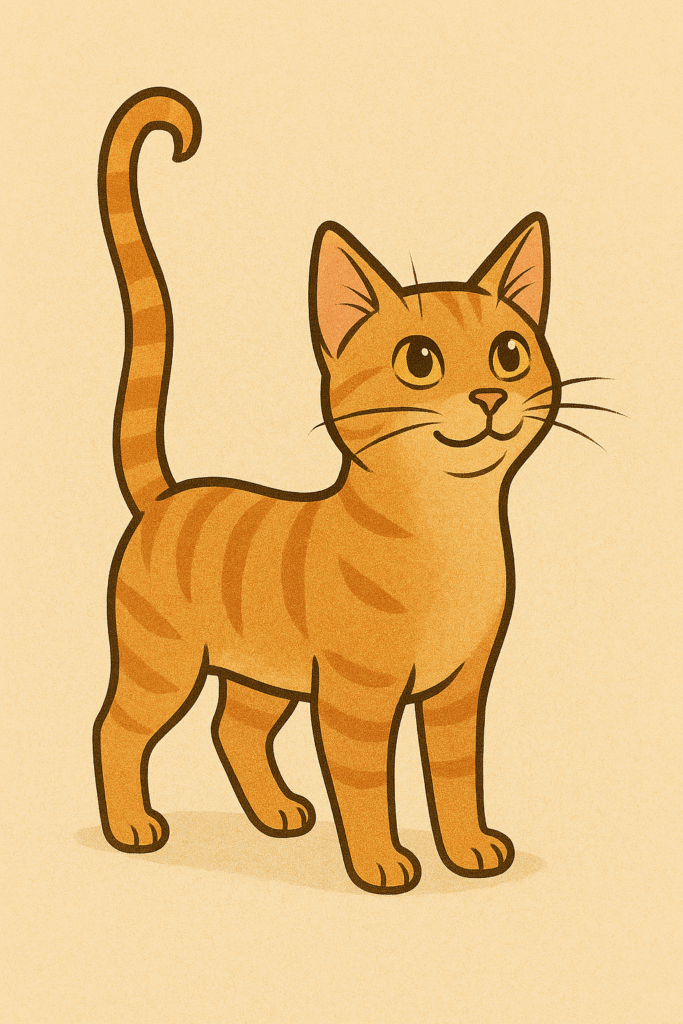
The Puffed-Up Tail: Fear and Aggression
A dramatically enlarged, bottle-brush tail is impossible to miss and signals that your cat feels threatened or extremely agitated. This defensive posture makes your cat appear larger and more intimidating to potential threats. You’ll often see this accompanied by an arched back and flattened ears.
If you see this body language, give your cat space and try to identify and remove whatever is causing their stress.
Low and Tucked: Anxiety and Submission
A tail held low or tucked between the legs indicates fear, anxiety, or submission. This cat is feeling insecure and may be preparing to hide or flee. It’s important to approach slowly and speak softly to help rebuild their confidence.
[Image suggestion: Side-by-side comparison showing different tail positions – high/happy, puffed/scared, low/anxious]
Decoding Ear Positions: Windows to Your Cat’s Emotions
Cat ears are incredibly mobile and expressive, capable of rotating 180 degrees to pick up sounds and communicate emotions. Learning to read ear positions will give you valuable insight into your cat’s state of mind.
Forward and Alert: Curious and Engaged
When your cat’s ears are pointing forward and slightly angled, they’re showing interest and engagement. This is the position you’ll see when your cat is focused on something intriguing – whether it’s a bird outside the window, a new toy, or you preparing their dinner.
Flattened Backwards: Warning Mode
Ears that are flattened back against the head are a clear warning sign. This body language indicates fear, anger, or aggression, and is your cat’s way of saying “back off!” This position often accompanies hissing, growling, or swatting behaviors.
If you see flattened ears, respect your cat’s boundaries and avoid forcing interaction until they calm down.
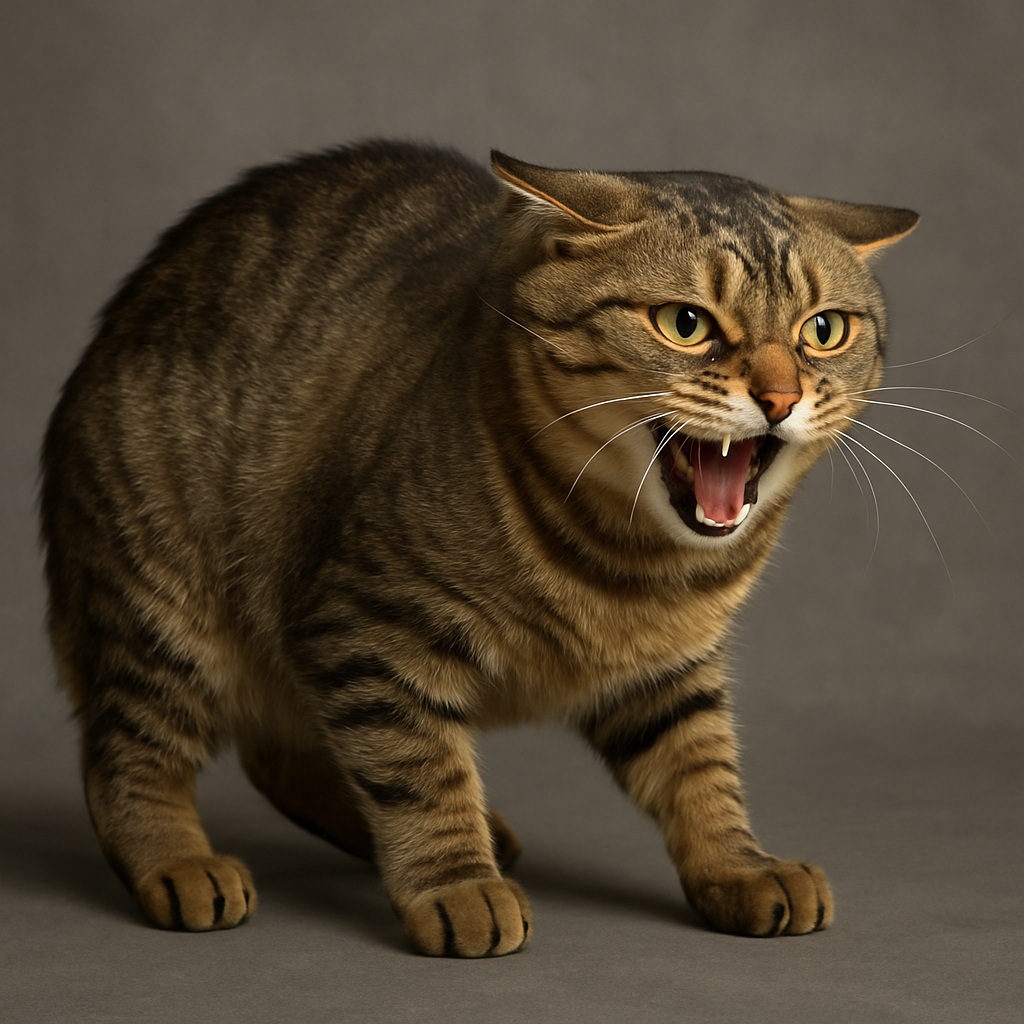
Swiveling and Twitching: High Alert
Rapidly moving ears that swivel in different directions show that your cat is on high alert, processing multiple sounds and stimuli. This is normal behavior, especially in new environments or when something has caught their attention.
Eye Communication: The Language of Feline Affection
Cat eyes are incredibly expressive, and understanding their eye language can deepen your connection with your feline friend.
The Slow Blink: “Cat Kisses”
One of the most endearing cat body language signals is the slow blink. When your cat looks at you and slowly closes and opens their eyes, they’re giving you the ultimate compliment – showing trust and affection. This behavior is often called a “cat kiss” because it’s their way of saying “I love you.”
You can return this gesture by slowly blinking back at your cat, which often results in a beautiful moment of mutual affection.
Wide Eyes with Dilated Pupils: Excitement or Fear
Large, dilated pupils can indicate either excitement (like during play) or fear and stress. Context is crucial here – a cat with dilated pupils who is crouched low is likely scared, while a cat with dilated pupils who is in a playful stance is probably just very stimulated and ready for action.
Half-Closed Eyes: Relaxation and Trust
When your cat’s eyes appear half-closed or sleepy-looking while they’re awake, it indicates complete relaxation and trust in their environment. This is the look of a content cat who feels completely secure.
[Image suggestion: Close-up of a cat’s face showing relaxed, half-closed eyes]
Body Posture: Understanding the Full Picture
Your cat’s overall body posture provides important context for interpreting their other body language signals.
The Confident Arch: Stretching and Greeting
When cats arch their backs while approaching you – especially if their tail is high and their movements are fluid – they’re stretching and showing friendliness. This is different from the fearful arch, which is accompanied by a puffed tail and sideways stance.
Rolling and Exposing the Belly: Ultimate Trust
A cat who rolls over and shows their belly is displaying ultimate trust and comfort. However, unlike dogs, this is rarely an invitation for belly rubs! Most cats prefer head and chin scratches even when they’re in this vulnerable position.
The Loaf Position: Alert Relaxation
When your cat sits with their paws tucked under their body (often called “loafing”), they’re relaxed but still alert. This position allows them to rest while being ready to move quickly if needed.
Crouching Low: Defensive Mode
A cat crouched low to the ground with their body compressed is in defensive mode. They’re making themselves as small as possible and preparing to either hide or defend themselves if necessary.
Facial Expressions: Subtle Signs with Big Meanings
Cats have surprisingly expressive faces once you know what to look for.
Whisker Positions: Emotional Indicators
Forward-pointing whiskers indicate curiosity and interest, while whiskers pulled back against the face suggest fear or defensiveness. Relaxed whiskers that hang naturally show contentment.
The Open-Mouth “Smile”: Scent Analysis
When your cat opens their mouth slightly and appears to be “smiling,” they’re actually using their Jacobson’s organ to analyze interesting scents. This behavior, called the flehmen response, helps them process pheromones and other chemical information.
Vocal Body Language: When Cats Use Their Voices
While we’re focusing on body language, it’s worth noting that cats often combine physical signals with vocalizations for clearer communication.
Purring with Kneading: Ultimate Contentment
When your cat purrs while kneading with their paws (often called “making biscuits”), they’re expressing the deepest form of contentment and affection. This behavior stems from kittenhood when they kneaded their mother while nursing.
Chirping and Chattering: Hunting Instincts
The excited chattering or chirping sound cats make while watching birds is often accompanied by focused body language – forward ears, alert posture, and an intensely focused gaze.
[Image suggestion: Cat in alert hunting position, focused on something outside a window]
Common Body Language Combinations and What They Mean
Understanding cat body language becomes easier when you look at combinations of signals rather than individual behaviors:
Happy and Relaxed Cat:
- High tail with curved tip
- Forward-pointing ears
- Half-closed eyes
- Relaxed whiskers
- Slow movements
Playful and Energetic Cat:
- Slightly puffed tail
- Alert, forward ears
- Wide eyes with dilated pupils
- Quick, bouncy movements
- May include the “play bow” (front end low, rear end high)
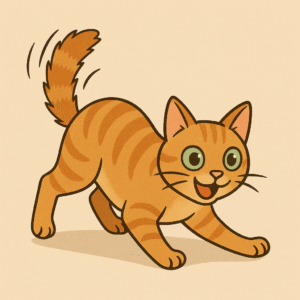
Stressed or Anxious Cat:
- Low or tucked tail
- Flattened ears
- Wide eyes
- Crouched posture
- May be hiding or seeking escape routes
Building Better Communication with Your Cat
Now that you understand the basics of cat body language, here are some tips for improving communication with your feline friend:
Respect Their Signals: When your cat shows signs of wanting space, honor their boundaries. This builds trust and prevents stress.
Mirror Their Energy: If your cat approaches with friendly body language, respond with gentle movements and a soft voice.
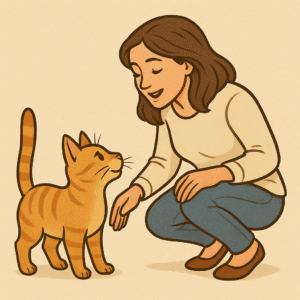
Use Positive Body Language: Avoid looming over your cat or making sudden movements. Instead, get down to their level and let them approach you.
Practice the Slow Blink: Try giving your cat “cat kisses” with slow blinks – many cats will return the gesture!
When Body Language Indicates Health Issues
Sometimes changes in body language can indicate health problems. Watch for:
- Sudden changes in posture or movement
- Persistent defensive body language without obvious cause
- Unusual tail positions or lack of tail movement
- Changes in eye appearance or responsiveness
If you notice significant changes in your cat’s typical body language patterns, consult with your veterinarian to rule out any underlying health issues.
Conclusion: Becoming Fluent in Cat Communication
Understanding cat body language transforms your relationship with your feline companion from guesswork to genuine communication. By paying attention to tail positions, ear movements, eye expressions, and overall posture, you’ll develop an intuitive understanding of your cat’s needs, emotions, and desires.
Remember that every cat is unique, and while these general guidelines apply to most cats, your individual cat may have their own specific ways of communicating. Spend time observing your cat’s patterns and behaviors – you’ll soon become an expert in their personal body language dialect.
The more fluent you become in reading your cat’s signals, the stronger your bond will grow. Your cat will appreciate having a human who truly “gets” them, and you’ll enjoy the deeper connection that comes from understanding what your feline friend is really trying to tell you.
What body language signals have you noticed in your own cat? Share your observations in the comments below!
Want to strengthen your bond with your cat even further? Check out our recommendations for interactive toys, comfortable cat furniture, and high-quality treats that will show your cat just how much you understand and care about their needs.
Related Articles You Might Enjoy:
- “10 Fun Facts About Cats You Didn’t Know”
- “Why Do Cats Purr? The Science Behind This Soothing Sound”
- “Creating the Perfect Cat-Friendly Home Environment”
Keywords: cat body language, cat behavior, understanding cats, cat communication, feline body language, cat tail positions, cat ear positions, cat eye language, pet behavior, cat psychology


